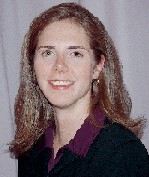 When I learned that I was pregnant, a wave of fear overwhelmed me. I wasnt afraid of late night feedings, changing diapers or even colic. Instead, I was downright petrified that my baby would have autism.
When I learned that I was pregnant, a wave of fear overwhelmed me. I wasnt afraid of late night feedings, changing diapers or even colic. Instead, I was downright petrified that my baby would have autism.
A very close friend of mine is a behavioral specialist in a suburban school district outside of
Over the years, Ive met a lot of the parents whom she works with, and Ive heard more sad stories than Id ever care to recount. Ive seen, up close, how autism tears families apart and how school systems, inundated with autistic students, grapple with how to integrate or, in some cases, isolate autistic kids. Ive met moms who cant leave the house for groceries, much less a night out for dinner, because they cant find, or cant afford, a caregiver whos trained in working with autistic kids.
Of course, Ive heard happy stories, too. But what stands out most is the discouraging fact that
This nation needs to work quickly to develop solutions for these families. So, what can you do to help? As always, the first step is becoming educated about the disease. On page 82, Marc B. Taub, O.D., and Robyn Russell, B.S., describe the epidemiology, etiology and systemic and ocular manifestations of autistic spectrum disorders (see Autism Spectrum Disorders: A Primer for the Optometrist).
Chances are, in years to come, more and more of your young patients will present with autism. To that end, Dr. Taub and Ms. Russell explain how you can alter your exam to meet the needs of this population. They also explore the positive effects of spectacle correction on autistic kids. Every little bit counts.
Autistic spectrum disorder is three to four times greater in males than females. So, unlike my quickly graying husband, I was somewhat relieved when, at our first ultrasound, we learned we were having a girl. Amelia Agnes Hellem is almost 6 months old now, and she has stolen our hearts.
As much as Id like her to stay this age forever, I know she wont. So, I look forward to the bittersweet day that she says mama for the first time. And when she does, I will try not to worry that she might soon stop saying it (Autism is often first recognized at 15 to 21 months because thats when language skills typically regress in autistic babies). Naturally, I could never love her lessno matter what life throws our waybut my heart would break for her.
While I cant (and wont) allow myself to think about how devastating it would be to see my child and my family suffer at the hands of autism, I firmly believe its my responsibility as a parent, and yours as a doctor, to do whatever we can to educate ourselves and others about this poorly-understood disease and to use that knowledge to help the countless families in this country who are affected by it.

